class: centre, middle, inverse name: UX from 30,000ft specific: COMP33511 topic: Principles of Efficient Experience # {{name}}: {{topic}} ### Lecture 09 (50 minutes) ### [@sharpic](http://twitter.com/sharpic) .controls[[SAQ](saqs.html) [D](discuss.html) [OH](oh.html) [C](coffee.html) [P](coffee.html#2) [SLIDES](http://sharpic.github.io/COMP33511/#slides) [↩](#)] --- layout: true class: left, middle name: UX from 30,000ft noteid: Ch 06 - Principles of Efficient Experience specific: COMP33511 website: http://sharpic.github.io/COMP33511 author: [@sharpic](http://twitter.com/sharpic) --- class: middle topic: Principles of Efficient Experience .noteids[{{noteid}}] .credits[ {{author}} | UX from 30,000ft | {{specific}} | {{topic}}] .controls[[SAQ](saqs.html) [D](discuss.html) [OH](oh.html) [C](coffee.html) [P](coffee.html#2) [SLIDES](http://sharpic.github.io/COMP33511/#slides) [↩](#)] ## {{topic}} Efficient<sup>1</sup> use or usability<sup>2</sup>. To my way of thinking both terms mean the same thing, and in reality were going to be talking about usability. However, you should be thinking of usability in more general terms; the more general terms of efficient use. This is because the concept of usability is much broader than the narrow confines of 'Task Completion Time' it is often associated with **[[9241-100:2011, 2011](#ISOTR-9241-10020112011kx)]** usability, in the context of UX, seems to be simple but in reality can be quite taxing. Complex computerised systems and interfaces are becoming increasingly widespread in everyday usage, components of computerised systems are embedded into many commercial appliances. Indeed, the miniaturisation of computerised systems, often found in mobile telephones and personal digital assistants, is on the increase. .aside[1. Productive of effects; effective; adequately operative. The cause which makes effects to be what they are )<br/>(esp. of a system or machine achieving maximum productivity with minimum wasted effort or expense --- OED. 1. The fact or quality of being usable (That can be used; that can be readily put to practical use) --- OED.<br/>The extent to which a product can be used by specified users to achieve specified goals with<br/> effectiveness, efficiency, and satisfaction in a specified context of use --- ISO.å] --- class: middle topic: Efficiency is for Everyone... .noteids[{{noteid}}] .credits[ {{author}} | UX from 30,000ft | {{specific}} | {{topic}}] .controls[[SAQ](saqs.html) [D](discuss.html) [OH](oh.html) [C](coffee.html) [P](coffee.html#2) [SLIDES](http://sharpic.github.io/COMP33511/#slides) [↩](#)] ## {{topic}} .left-column[.fig[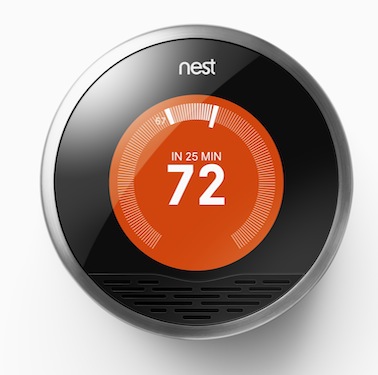 .caption[Nest Learning Thermostat .credit[NEST]]]] -- .right-column[.fig[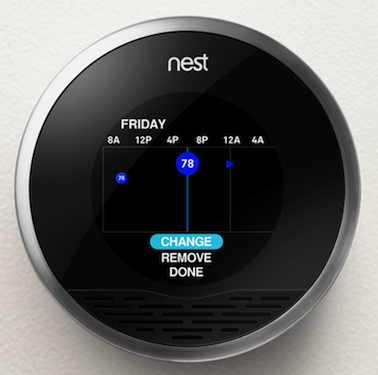 .caption[Nest Thermostat Control .credit[NEST]]]] --- class: middle, center topic: Efficiency is for Everyone... .noteids[{{noteid}}] .credits[ {{author}} | UX from 30,000ft | {{specific}} | {{topic}}] .controls[[SAQ](saqs.html) [D](discuss.html) [OH](oh.html) [C](coffee.html) [P](coffee.html#2) [SLIDES](http://sharpic.github.io/COMP33511/#slides) [↩](#)] ## {{topic}} .fig[ .caption[Modern Thermostat .credit[wikicommons]]] --- class: middle topic: Consensus on Meaning .noteids[{{noteid}}] .credits[ {{author}} | UX from 30,000ft | {{specific}} | {{topic}}] .controls[[SAQ](saqs.html) [D](discuss.html) [OH](oh.html) [C](coffee.html) [P](coffee.html#2) [SLIDES](http://sharpic.github.io/COMP33511/#slides) [↩](#)] ## {{topic}} ### Relationship of UX, ergonomics, or human factors to usability 1. Some think of usability '... as the software specialisation of the larger topic of ergonomics'; 1. Others view topics as tangential, with ergonomics focusing on physiological matters, and usability focusing on psychological matters; but 1. Experts have written separate, but overlapping, frameworks for aspects of usability which should be taken into account when designing and building systems interfaces. --- class: middle topic: Universal Design / Design for All! .noteids[{{noteid}}] .credits[ {{author}} | UX from 30,000ft | {{specific}} | {{topic}}] .controls[[SAQ](saqs.html) [D](discuss.html) [OH](oh.html) [C](coffee.html) [P](coffee.html#2) [SLIDES](http://sharpic.github.io/COMP33511/#slides) [↩](#)] ## {{topic}} ### 'Universality' suggests "...to most UXers and engineers that the solutions they come up with must best fit most of the population most of the time. Many organisations follow the viewpoint that universal usability means design-for-all." -- "A focus on designing products so that they are usable by the widest range of people operating in the widest range of situations as is commercially practical" -- "Thus, universal usability is more a function of keeping all of the people and all of the situations in mind and trying to create a product which is as flexible as commercially practical, so that it can accommodate the different users and situations." --- class: middle topic: Universal Design / Design for All! .noteids[{{noteid}}] .credits[ {{author}} | UX from 30,000ft | {{specific}} | {{topic}}] .controls[[SAQ](saqs.html) [D](discuss.html) [OH](oh.html) [C](coffee.html) [P](coffee.html#2) [SLIDES](http://sharpic.github.io/COMP33511/#slides) [↩](#)] ## {{topic}} ### My Unconventional View 1. By trying to address all user needs in one design the technologist is apt to address none; 1. Making software usable is not just about a utilitarian view of software use, it is also about the personal choice of the user; 1. Greater flexibility and configurability of both interfaces and interactions are the solution. .aside[...expanded in: S. Harper. Is There Design-For-All?<br/>Universal Access in the Information Society, 6(1):111--113, 2007.] --- class: middle topic: Usability Models .noteids[{{noteid}}] .credits[ {{author}} | UX from 30,000ft | {{specific}} | {{topic}}] .controls[[SAQ](saqs.html) [D](discuss.html) [OH](oh.html) [C](coffee.html) [P](coffee.html#2) [SLIDES](http://sharpic.github.io/COMP33511/#slides) [↩](#)] ## {{topic}} ### The Human Processor Model --Card, Moran, and Newell 1. Calculate how long it takes to perform a certain task; 1. Experimental times to calculate cognitive and motor processing time; 1. Allows a system designer to predict the performance; 1. Uses the cognitive, perceptual, and motor processors along with the visual image, working memory, and long term memory stores; 1. Each processor has a cycle time and each memory has a decay time; 1. Combining input pathways with cycle or decay times allows task completion time can be calculated; but... -- ### ...not very accurate, too many variables / confounding variables. --- class: middle topic: Usability Models .noteids[{{noteid}}] .credits[ {{author}} | UX from 30,000ft | {{specific}} | {{topic}}] .controls[[SAQ](saqs.html) [D](discuss.html) [OH](oh.html) [C](coffee.html) [P](coffee.html#2) [SLIDES](http://sharpic.github.io/COMP33511/#slides) [↩](#)] ## {{topic}} ### GOMS --Card, Moran, and Newell - **Goals** are what the user intends to accomplish; - **Operators** are actions that are performed to get to the goal; - **Methods** are sequences of operators that accomplish a goal; and - **Selection** rules are used to choose a from multiple methods. 1. Specialisation of HPM; 1. Reductionist - reduces a user's interaction with a computer to their primary actions; 1. Trying to reduce number of possible variables / confounding variables; but... ### ...expects users to follow logical routines and is not resilient to user unpredictability. --- class: middle topic: Usability Models .noteids[{{noteid}}] .credits[ {{author}} | UX from 30,000ft | {{specific}} | {{topic}}] .controls[[SAQ](saqs.html) [D](discuss.html) [OH](oh.html) [C](coffee.html) [P](coffee.html#2) [SLIDES](http://sharpic.github.io/COMP33511/#slides) [↩](#)] ## {{topic}} ### KLM --Card, Moran, and Newell, also Kieras 1. More simplistic specialisation of GOMS; 1. Amenable to Computation; i.e. 1. CogTool - CMU http://cogtool.hcii.cs.cmu.edu. --- class: middle, center topic: Usability Models .noteids[{{noteid}}] .credits[ {{author}} | UX from 30,000ft | {{specific}} | {{topic}}] .controls[[SAQ](saqs.html) [D](discuss.html) [OH](oh.html) [C](coffee.html) [P](coffee.html#2) [SLIDES](http://sharpic.github.io/COMP33511/#slides) [↩](#)] ## {{topic}} .fig[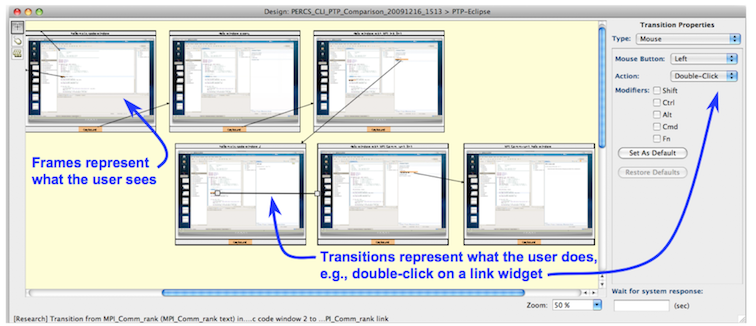 .caption[...from: Richards, Bellamy, John, Swart, Thomas (2010) Using CogTool to Model Programming Tasks. .credit[Presented at the Psychology of Programming Work in Progress Workshop, Dundee, Scotland]]] --- class: middle, center topic: Usability Models .noteids[{{noteid}}] .credits[ {{author}} | UX from 30,000ft | {{specific}} | {{topic}}] .controls[[SAQ](saqs.html) [D](discuss.html) [OH](oh.html) [C](coffee.html) [P](coffee.html#2) [SLIDES](http://sharpic.github.io/COMP33511/#slides) [↩](#)] ## {{topic}} .fig[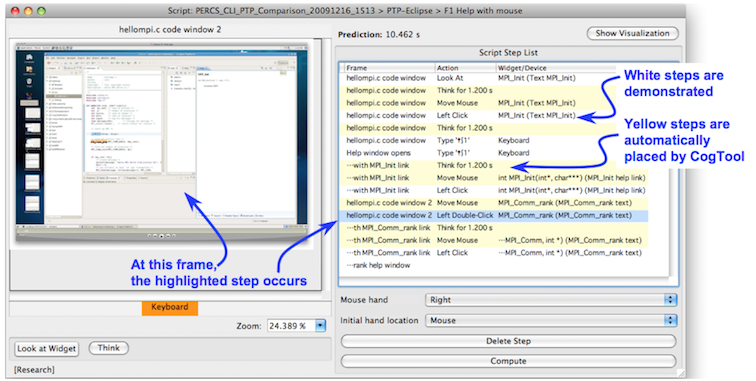 .caption[...from: Richards, Bellamy, John, Swart, Thomas (2010) Using CogTool to Model Programming Tasks. .credit[Presented at the Psychology of Programming Work in Progress Workshop, Dundee, Scotland]]] --- class: middle, center topic: Usability Models .noteids[{{noteid}}] .credits[ {{author}} | UX from 30,000ft | {{specific}} | {{topic}}] .controls[[SAQ](saqs.html) [D](discuss.html) [OH](oh.html) [C](coffee.html) [P](coffee.html#2) [SLIDES](http://sharpic.github.io/COMP33511/#slides) [↩](#)] ## {{topic}} .fig[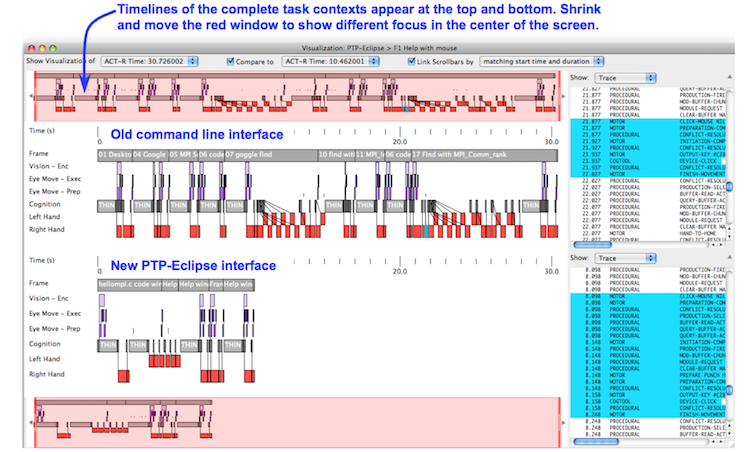 .caption[...from: Richards, Bellamy, John, Swart, Thomas (2010) Using CogTool to Model Programming Tasks. .credit[Presented at the Psychology of Programming Work in Progress Workshop, Dundee, Scotland]]]